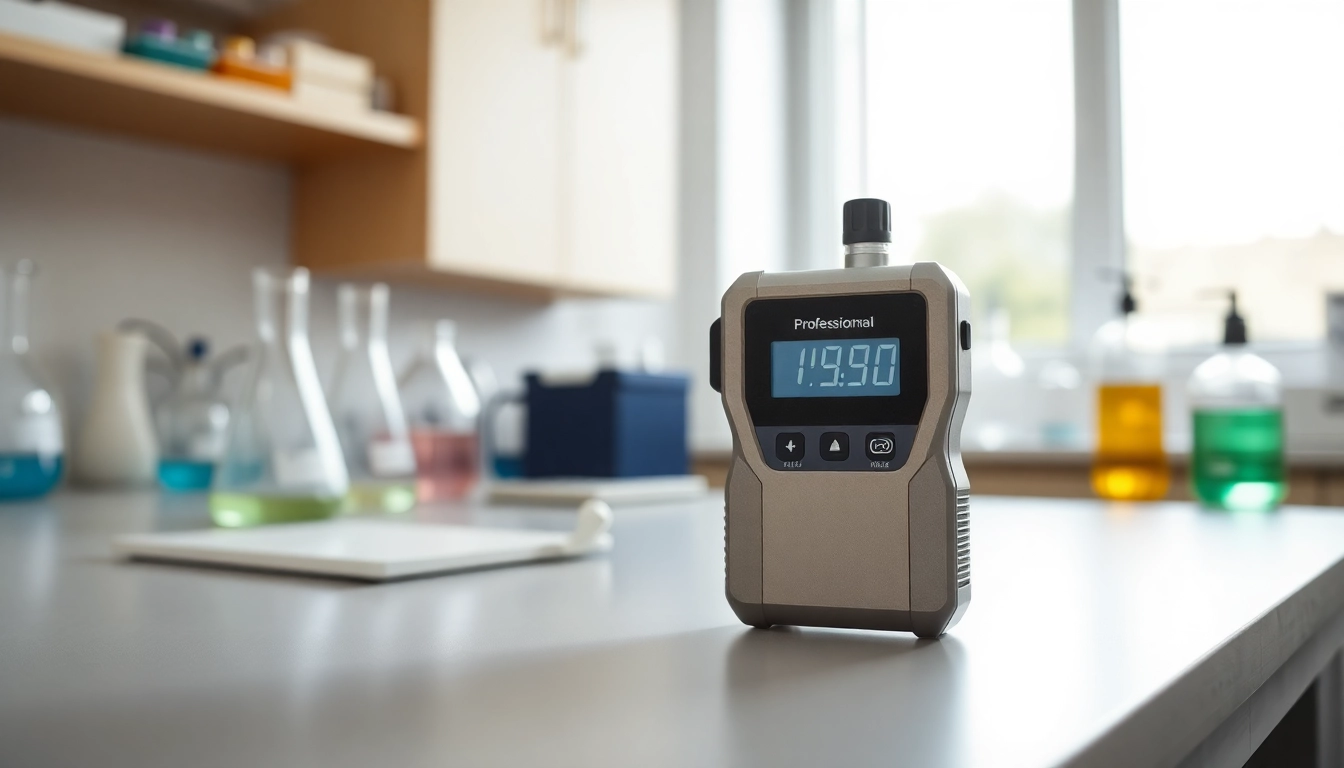Understanding Hydrogen Sulfide and Its Risks
What is Hydrogen Sulfide?
Hydrogen sulfide (H2S) is a colorless gas with a characteristic odor reminiscent of rotten eggs. It occurs naturally in crude petroleum, natural gas, and volcanic gases. Environmental exposure happens primarily through industrial processes, such as petroleum refining and wastewater treatment. Despite its natural origins, hydrogen sulfide poses serious safety and health risks, making it critical for industries and households to understand its properties and dangers, and to invest in a reliable Hydrogen Sulfide detector to monitor levels effectively.
Health Hazards Associated with Hydrogen Sulfide Exposure
Exposure to hydrogen sulfide can have severe health implications, varying from mild irritation to life-threatening consequences. At low concentrations, symptoms may include irritation of the eyes and respiratory tract, headaches, dizziness, and nausea. As concentrations increase, the risk escalates—potentially leading to loss of consciousness, convulsions, and even death. The Occupational Safety and Health Administration (OSHA) has set permissible exposure limits, emphasizing the importance of monitoring this hazardous gas, particularly in industrial environments.
Industries Impacted by Hydrogen Sulfide
Several industries face a heightened risk of hydrogen sulfide exposure. Key sectors include:
- Oil and Gas: The extraction and refining processes often release hydrogen sulfide gas.
- Pulp and Paper: The manufacturing process of paper involves chemical treatments that can produce hydrogen sulfide.
- Wastewater Treatment: Anaerobic processes can lead to higher concentrations of hydrogen sulfide.
- Mining: Certain mining activities, especially in sulfide-rich regions, significantly increase hydrogen sulfide exposure risks.
Recognizing the risks in these industries underscores the necessity for effective monitoring solutions such as hydrogen sulfide detectors to safeguard workers and surrounding communities.
Features to Look for in a Hydrogen Sulfide Detector
Sensor Technology and Sensitivity
The accuracy of a hydrogen sulfide detector fundamentally relies on its sensor technology. Various types of sensors exist, including electrochemical sensors, infrared sensors, and catalytic sensors. Each technology offers unique benefits and challenges. For example, electrochemical sensors are widely favored for their sensitivity in low concentration ranges and quick response times. Meanwhile, infrared sensors may excel in harsh environments, providing durability and longevity. Understanding the operational environment and specific sensitivity requirements is crucial when selecting the appropriate sensor technology.
Calibration and Maintenance Needs
The effectiveness of any monitoring device hinges on proper calibration and maintenance. For hydrogen sulfide detectors, regular calibration is essential to ensure they provide accurate readings, especially after exposure to extreme environmental conditions or after a specific duration of use. Users should adhere to the manufacturer’s guidelines regarding calibration schedules and maintenance protocols, fostering reliability and accurate performance. A well-maintained detector not only improves safety but also extends the lifespan of the device.
Real-time Monitoring and Alerts
In industries where toxic gas exposure is a constant threat, real-time monitoring is imperative. The best hydrogen sulfide detectors come equipped with continuous monitoring capabilities, allowing instant detection of gas presence. Coupled with alarm systems—visual and auditory—these devices alert personnel to dangerous levels, facilitating swift action. Some advanced models also offer app integration or wireless functionality, allowing users to receive alerts remotely. This feature can significantly enhance safety by providing continuous oversight, even when personnel are not physically present.
Top Uses for Hydrogen Sulfide Detectors
Industrial Applications
In industrial environments, hydrogen sulfide detectors play a pivotal role in safeguarding employees’ health and operational quality. These detectors are extensively used in:
- Oil Refineries: Monitoring for leaks during extraction and processing.
- Wastewater Treatment Plants: Detecting hazardous gases during decomposition processes.
- Chemical Manufacturing: Ensuring safety during chemical processing and storage.
Employers can mitigate risks through routine use of these detectors, fostering a culture of safety and compliance with regulatory requirements.
Environmental Monitoring
Beyond industrial use, hydrogen sulfide detectors are utilized for environmental monitoring, particularly in areas where natural gas might escape or near landfills. These detectors assist in assessing air quality, ensuring communities remain informed about harmful gas concentrations. Environmental agencies leverage this data to formulate regulations and policies that protect public health and the environment while promoting accountability among industrial operators.
Home Safety Considerations
While hydrogen sulfide exposure is often associated with industrial settings, it can also pose risks in residential areas, particularly in homes near oil drilling sites or sewage systems. Homeowners should consider installing hydrogen sulfide detectors as a proactive safety measure. These detectors offer peace of mind, alerting residents to potentially dangerous levels of the gas. Implementing home safety practices, such as proper ventilation and regular inspections of appliances that might emit hydrogen sulfide, further enhances safety and minimizes risks.
How to Properly Use a Hydrogen Sulfide Detector
Installation Guidelines
For optimal performance, hydrogen sulfide detectors must be strategically installed based on their intended use. In industrial settings, follow these guidelines:
- Install units at head height or above, as hydrogen sulfide is slightly lighter than air and will disperse quickly.
- Avoid proximity to exhaust fans or HVAC systems that may impact readings.
- Ensure a clear space around the unit for unobstructed airflow, enhancing detection capabilities.
For residential installations, consider placing detectors near potential sources such as bathrooms, kitchens, and basements, focusing on areas where gas accumulation could occur.
Regular Testing Procedures
Maintaining functionality through regular testing is fundamental. Depending on the model’s specifications, users should conduct tests monthly or quarterly to check for accuracy and responsiveness. Testing typically involves exposing the unit to known concentrations of hydrogen sulfide to verify its performance. Keeping records of these tests demonstrates diligence and can prove critical during inspections or audits.
Responding to Alarms and Readings
Immediate action upon alarm activation is crucial for safety. Proper protocols should be established and communicated to all personnel, detailing steps to take when an alarm sounds:
- Evacuate the area immediately.
- Do not attempt to identify the source without appropriate protective equipment.
- Alert emergency services and provide them with relevant information about the situation.
Regular training sessions can enhance employees’ readiness, fostering an environment of safety and vigilance.
Comparative Review of Popular Hydrogen Sulfide Detectors
Budget-Friendly Options
For those on a budget, several cost-effective hydrogen sulfide detectors deliver satisfactory performance without breaking the bank. Models like the XYZ-100 offer reliable detection capabilities at a lower price point, making them suitable for home use or smaller industrial applications. Key features to look for include simple operational interfaces and basic alarm systems, ensuring essential protection without unnecessary complexity.
Mid-Range Choices
Mid-range detectors often incorporate enhanced features that improve functionality. The ABC-200, for instance, provides advanced sensor technology and real-time monitoring functions, making it ideal for industrial environments that need more robust detection systems. Users can expect better build quality, extended battery life, and upgradable components, providing added security for sustained operations.
High-End Models
For those requiring top-tier monitoring capabilities, high-end hydrogen sulfide detectors like the DEF-300 come equipped with cutting-edge technology. These detectors often include intricate data logging systems, remote monitoring via mobile applications, and robust alarm systems capable of notifying personnel in multiple ways. Such models cater to industries with strict safety regulations and demand for precise monitoring, emphasizing the value of investing in quality and reliability.



